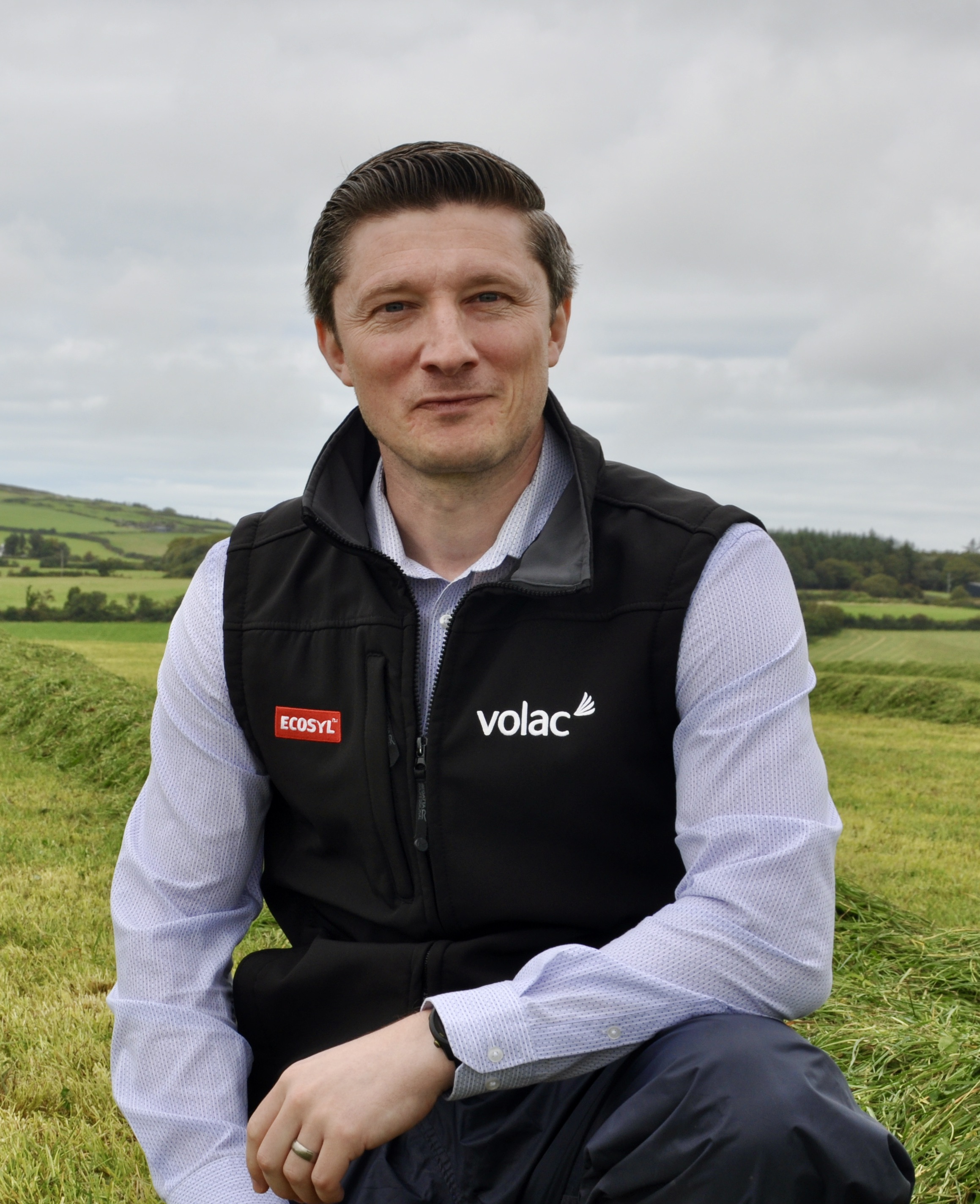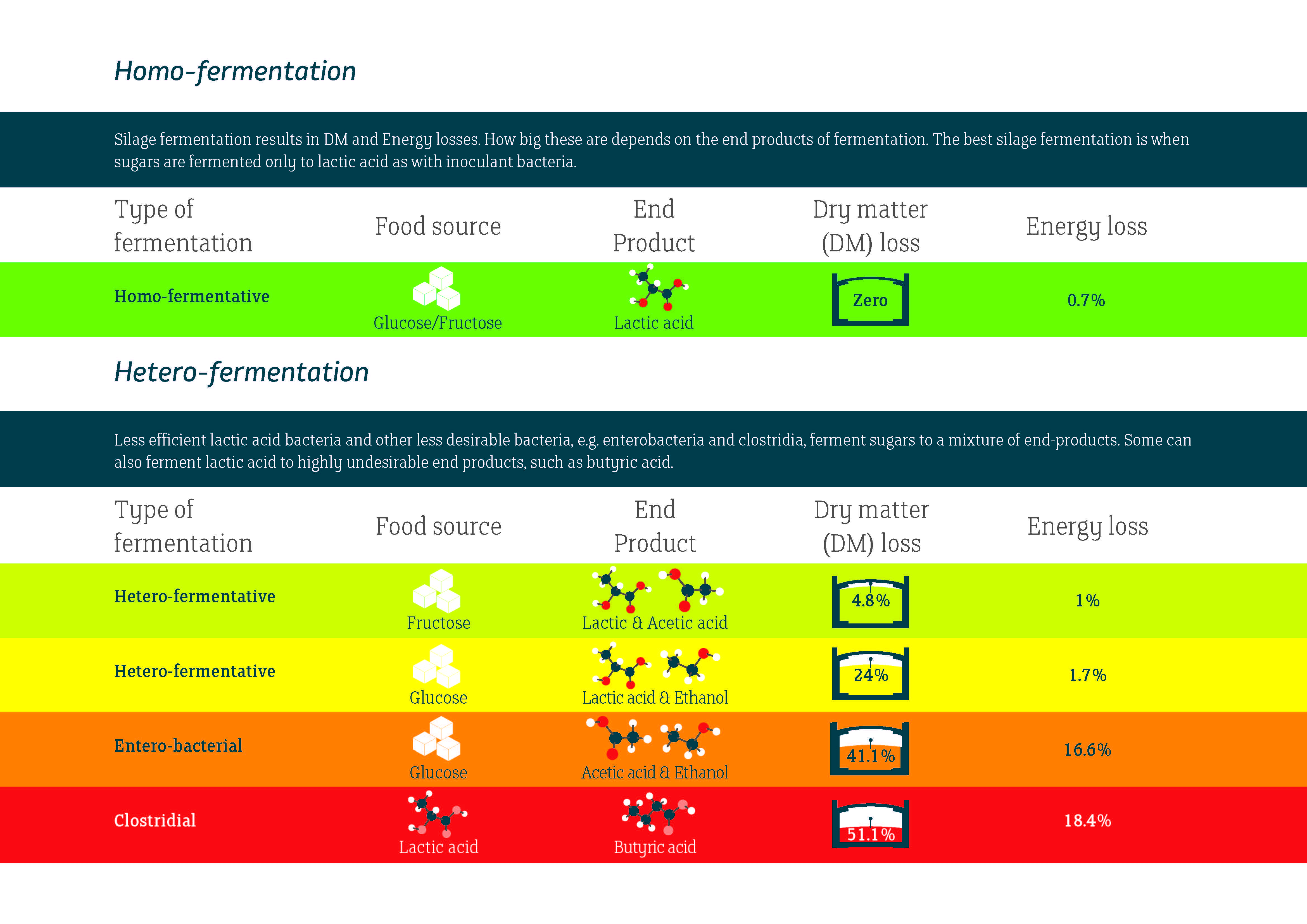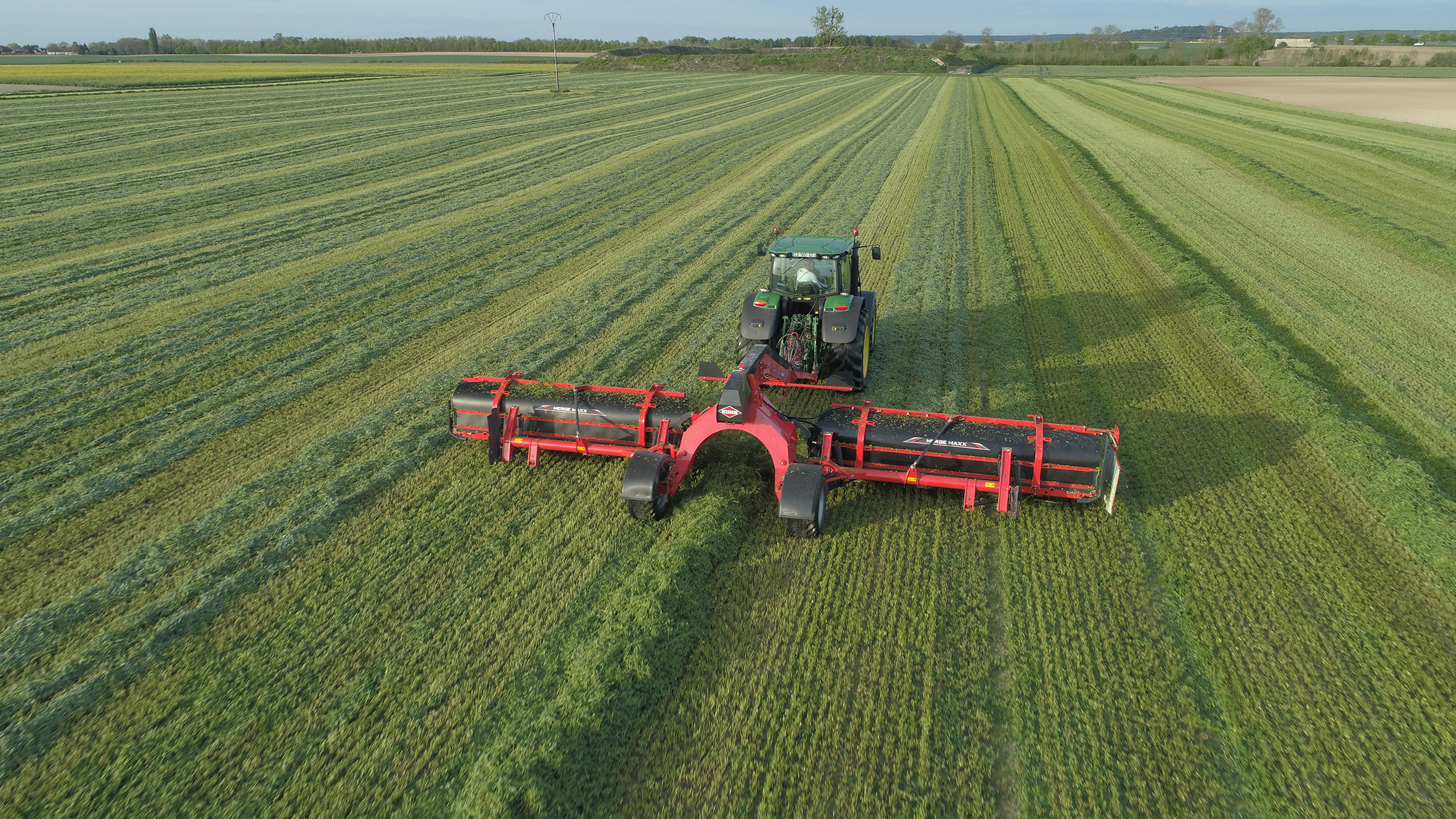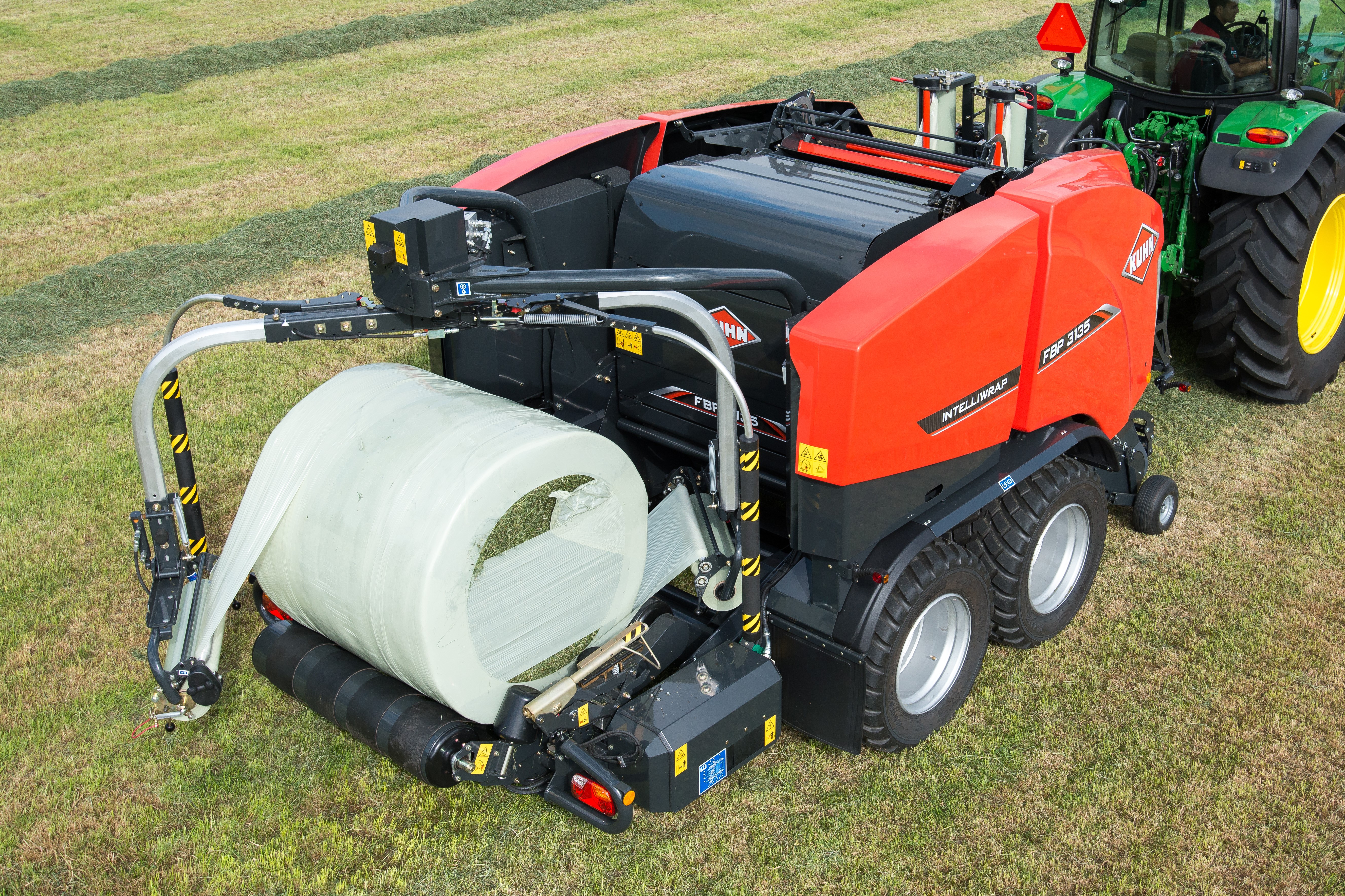Cutting silage contamination
12 March 2025
Unwanted microbes in silage cause major losses in quality and quantity – not something you want if striving for more milk from forage. So how can contamination with these ‘bad bugs’ be reduced?
Even in well-made grass silage, typical dry matter (DM) losses range between 8-10%, says Ecosyl silage microbiologist, Dr Mark Leggett of Volac. If attention to detail slips, they could be over 30%, he says, and losses do not end there.
The unwanted bacteria that cause these losses feed on the most nutritious parts of the DM first – the sugars and proteins,” says Dr Leggett. “So the silage remaining is also lower in nutritional value for milk production.
“Two such unwanted bacteria often present on grasses include enterobacteria from slurry and clostridia from soil.
Enterobacteria ferment sugar in grass, but do so inefficiently, wasting more than 16% of the fermented sugar’s energy and 40% of its DM (see table). They also produce acetic acid in the process, which, although useful in some ways, is not ideal for preserving silage against certain other spoilage bacteria. Enterobacteria also break down protein to release ammonia.
 Meanwhile, Dr Leggett says clostridia from soil can metabolise not only sugars but also proteins and even lactic acid, which is a beneficial acid. This results in even higher DM and energy losses and produces unpalatable products such as butyric acid and ammonia, he says, which can lead to silage rejection.
Meanwhile, Dr Leggett says clostridia from soil can metabolise not only sugars but also proteins and even lactic acid, which is a beneficial acid. This results in even higher DM and energy losses and produces unpalatable products such as butyric acid and ammonia, he says, which can lead to silage rejection.
So, what can be done to minimise unwanted bacterial contamination? According to Rhodri Jenkins of Kuhn Farm Machinery, this starts before harvest by ensuring swards are dense, with minimal gaps, and removing any previous wheel ruts to prevent soil easily entering the forage at harvest.
The start of the harvesting process is just as important as the end, says Mr Jenkins, with cutting height of mowing discs, and blade sharpness, both key areas to focus on. “Field undulations, combined with incorrectly set mowers, can cause scalping, and will increase the potential for soil to be mixed with the forage. Likewise, with blunt blades, mowers will pull grass rather than providing a clean cut, which could lead to grasses being drawn from the sward along with soil. Changing the cutting height to suit different fields will also ensure mower blades last longer.”
Similarly, Mr Jenkins says, although important for rapid wilting, tedding grass can produce more contamination if the implement is incorrectly set. “There is a fine balance between lifting grass cleanly from the ground and ensuring the tines don’t contact the soil at the same time, with wider machines more likely to encounter issues. Features such as Kuhn’s Ground Save Control allows individual rotors on tedders up to 17m wide to oscillate independently of the carrying chassis, which means they follow the ground contours, rather than the angle of the machine.” 
In recent years, the introduction of belt mergers as an alternative to rakes has been seen by many as an innovative way to reduce contamination when rowing up in front of a forager or baler. These machines use pickup reels to flick the grass onto belts for depositing into a swath which helps to reduce contamination and leaf crumbling experienced during raking.
Mr Jenkins explains: “Although an established and popular method of rowing up, rakes move the material across the top of the sward which can allow stones and debris to enter the swath. Mergers can group 27m of cut grass into one swath with their bi-directional belts, so large foragers and balers can still be efficient in lighter second and third cuts.”
Users operating rakes should be aware that dry, dusty conditions have the potential to seriously reduce forage quality. On hot days it isn’t uncommon to see a cloud of dust following a twin- or four-rotor rake, but that dust can have detrimental consequences on forage quality so adjusting operating speed to suit conditions is essential, suggests Mr Jenkins.
When it comes to harvesting, although foragers with correctly set pickup reel heights will keep contamination low, users releasing netted bales onto the stubble before wrapping are risking contamination. “Depositing a net-wrapped bale back onto the sward may appear harmless,” suggests Mr Jenkins, “but a light, stony soil or rutted fields can still present a risk to forage contamination before wrapping, and loose dirt and stones could easily become attached to the net.”
 Round baler-wrapper combinations are seen as a modern answer to this issue and can offer users several benefits over standard round balers. Forage contamination after baling is eliminated as the bale is completely covered when it touches the ground. It also locks in quality at the time of baling, rather than waiting for the wrapping procedure, which can sometimes be several hours, or even a day later. Further benefits of combination balers include a significant labour saving by combining two processes, and the option for innovative film binding to only produce one binding product. Keeping trailers with dirty wheels away from the clamp apron will also minimise contamination transfer from the field when tipping.
Round baler-wrapper combinations are seen as a modern answer to this issue and can offer users several benefits over standard round balers. Forage contamination after baling is eliminated as the bale is completely covered when it touches the ground. It also locks in quality at the time of baling, rather than waiting for the wrapping procedure, which can sometimes be several hours, or even a day later. Further benefits of combination balers include a significant labour saving by combining two processes, and the option for innovative film binding to only produce one binding product. Keeping trailers with dirty wheels away from the clamp apron will also minimise contamination transfer from the field when tipping. 
Dr Leggett agrees with the importance of best practice field operations. Because of the fermentation problems that slurry bacteria cause, slurry should always be applied to the soil, not the leaf, he stresses, preferably by injection or, if not, then via trailing shoe.
“Ideally at least 10 weeks should elapse between application and taking first-cut to allow slurry bacteria to dissipate. This is impractical during the season, so if slurry is applied between cuts it should be at a low dose and diluted to a very low %DM – about 2%.”
When it comes to harvesting and ensiling, Dr Leggett says to reduce ‘bad’ bacteria, speed is key: speed of wilting to the optimum %DM, typically 28-32%, and speed of reducing the pH to a level that inhibits undesirable bacterial growth.
As soon as grass is mown, the sugars released are used by a wide range of bacteria, as well as by yeasts. So the shorter the time between cutting and stabilising the forage in the clamp, the less time they have to grow. This is why rapid wilting is so important.
In the clamp, Dr Leggett says the aim is to reduce from about pH 6 in fresh forage to around pH 3.8-4.5 as quickly as possible to inhibit undesirable bacteria.
A fermentation that produces only lactic acid is effective at this, he says, because lactic acid is an optimally strong acid. But as well as being effective at preserving against unwanted bacteria, lactic acid has another advantage: if produced by homofermentative fermentation, it retains all the DM and virtually all the energy contained in the original fermented sugar, he adds.
Dr Leggett says: “This is this type of fermentation that occurs when a quality silage additive, such as Ecosyl, containing a high number of efficient lactic acid-producing bacteria is applied. Indeed, research on Ecosyl shows a very fast pH fall in the early stages of ensiling, which is an important timescale for stopping bad bacteria establishing.
“Allied to this, it has also been shown to halve DM loss, to boost silage metabolisable energy by 0.6 MJ/kgDM, and to preserve more true protein. Most important of all, across a range of forages in 15 international independent trials, milk yield from feeding silage made with Ecosyl was improved by an average of an extra 1.2 litres/cow/day.
With the silage in clamps potentially worth tens of thousands of pounds, it is worth paying attention to detail.
Other tips to reduce microbial contamination include fully removing old silage from clamps before filling, and repairing cracked concrete walls that harbour spoilage microorganisms, Dr Leggett adds.
What about silage heating?
Silage heating (aerobic spoilage) is a sign of losses due to yeasts and moulds, says Dr Leggett. These require air to grow, so measures which exclude air from clamps – thorough consolidation, sheeting and weighting, and correct face management – are crucial, he stresses.
Dr Leggett says: “If heating is a concern, as well as using good clamp management, use an additive with specific activity against the yeasts and moulds that cause it. This might be a dual-acting additive that includes a chemical preservative, or a dual-acting inoculant with a second beneficial bacterium to specifically target yeast and mould growth.”
Looking to improve your silage? Incorporating a tried-and-tested silage additive into your strategy is crucial. Dive into our website for comprehensive insights on Ecosyl 100 additive and Ecocool additive.